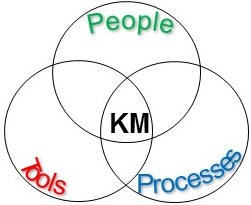Two previous posts on project team partnering covered a failed project and the benefits of engaging a professional partnering consultant or facilitator on your project. Facilitators can help improve project performance through communication training and eliminating unresolved issues that erode team cohesion. In this post I would like to cover a resource that assist team members in dealing with conflicts or unresolved issues.
Conflicts arise when an individual or group perceives a difference in understanding in project guidance, communication, or directives. This can impede performance and lead to breakdowns in team communication and execution. One tool that can help a team maintain cohesion and keep the project progressing on schedule is a dispute resolution ladder. It provides a structured communication process that allows unresolved issues to be elevated in a predictable and professional manner.
The dispute resolution ladder is relatively simple, but requires a deliberate team meeting to properly develop and finalize. Teams I have assisted implementing a resolution ladders found it more effective for a facilitator to be a part of the process, it sped up the process. In addition, I suggest the following five ground rules:
- Resolve disagreements at the lowest level.
- Exercise timely escalation of unresolved issues – i.e. follow the agreed upon time frames.
- No jumping levels of authority.
- Ignoring the problem is not acceptable.
- Don’t make you are not comfortable with.
I use the following basic guidelines assisting clients to build their resolution ladder:
Columns
Column headers can be changed to represent any of the key team members as needed. The four-column format is used most frequently ensuring critical disciplines are included. Several typical examples are:
- Project Owner and Prime Contractor (must have)
- Architect or design team members, or
- Key subcontractors, particularly those with significant contributions during the project. If required they can be changed to meet changing needs over the project life cycle.
Rows
The number of rows, or levels, is completely up to the project team, but I recommend keeping the number of levels to minimum required for simplicity and clarity. Typically four rows works well for most projects.
| The “___ Days” boxes represent the acceptable duration a delay in consensus or unresolved issue is tolerated before the matter is escalated to the next level for resolution. The goal is for the majority of issues to be handled at the lowest level possible. In fact, some teams have included goals in their project scorecards to track the number of issues raised to the top two levels depicted. This provides the team an opportunity to more effective identify where and which issues are causing the most friction on the project if needed. |
Summary
The resolution ladder provides a predictable process for team mates to raise an issue when specific criteria are not met, as agreed upon by the team, or inconsistencies are identified. It isn’t overly complicated; in past sessions I have assisted groups work through the development of the ladder in as little as an hour. It is usually a helpful session because it encourages the group to test and validate their communication channels and protocols. Invariably weaknesses are discovered and corrected.
Sample Resolution Ladder
Abbreviations:
HCA Head of Contracting Activity
KO Contracting Officer
COTR Contracting Officer Technical Representative
VP Vice President
Proj Ex Project Executive
PM Project Manager
Super Superintendent











